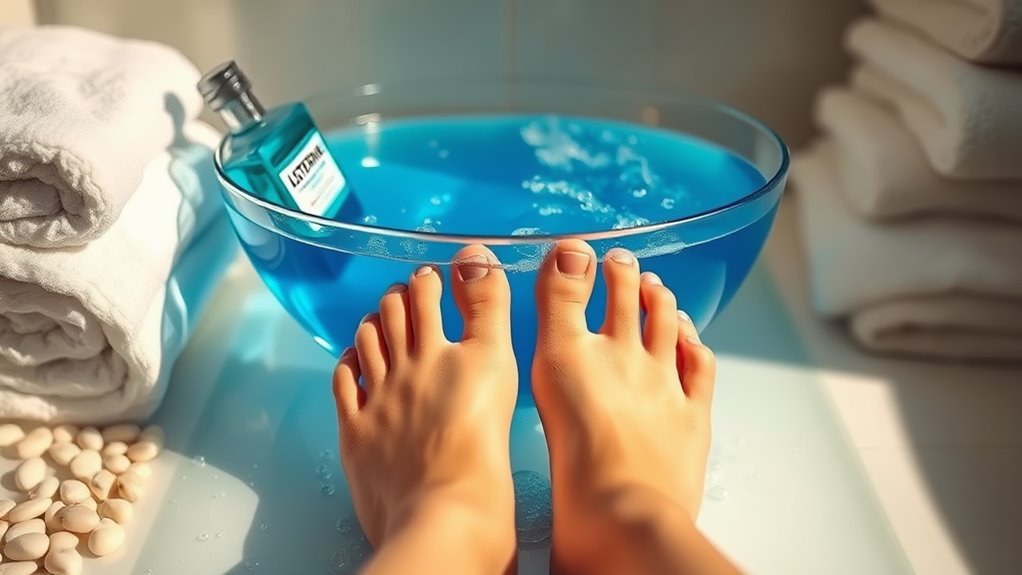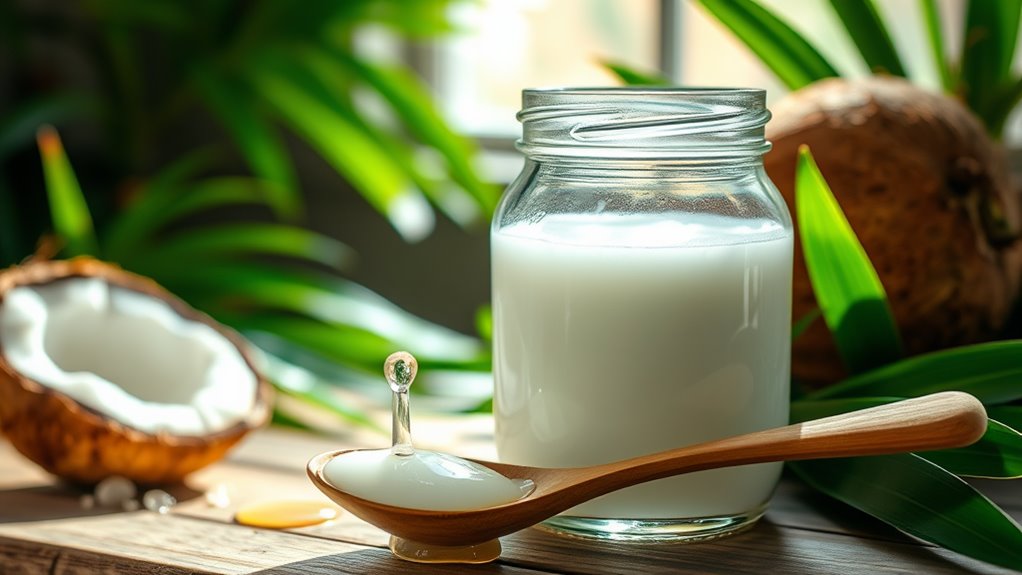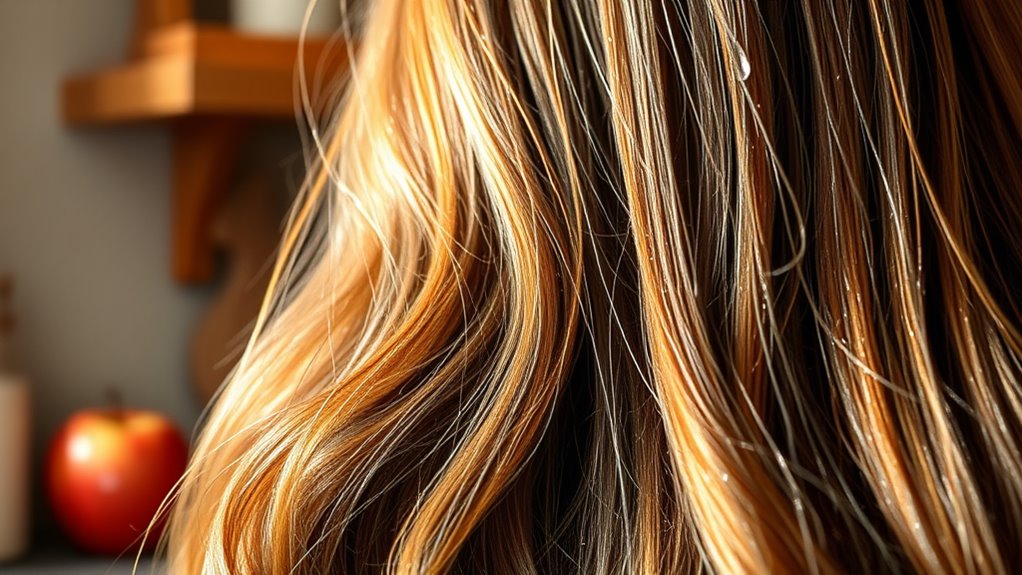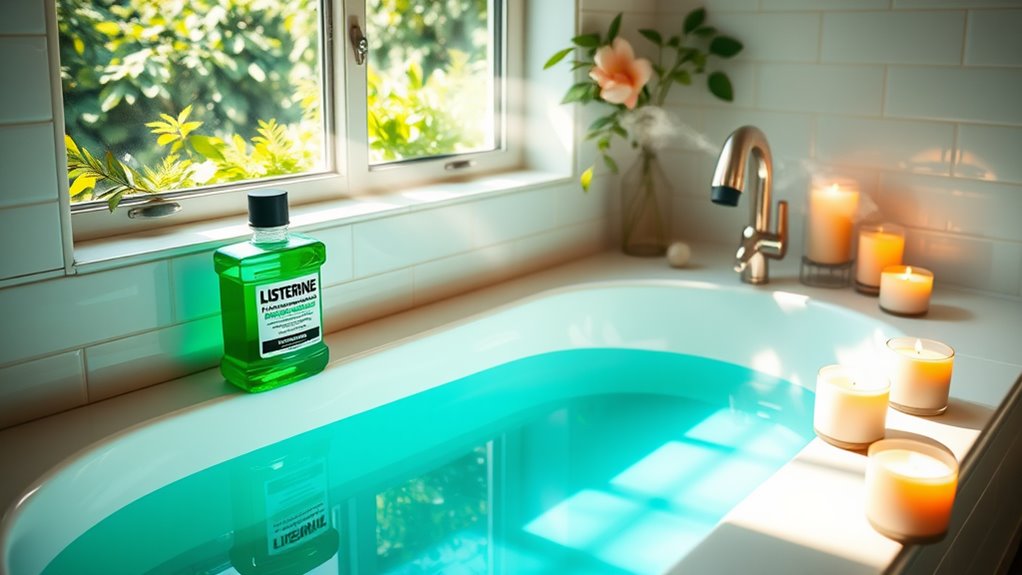Listerine Foot Soak. The Results Will Shock You!
You won’t believe what Listerine foot soak can do for you! This powerful mix of antiseptic ingredients tackles odor, fungus, and dry skin, leaving your feet feeling fresh and revitalized. Just combine equal parts of Listerine and warm water, soak for 30 minutes, and watch as you transform tired, cracked heels into soft, beautiful skin. Users rave about their before-and-after results, so stick around to uncover even more tips and benefits that this simple soak can provide!
The Science Behind Listerine Foot Soak
While many people swear by Listerine as a foot soak remedy, the science behind it’s worth exploring. Listerine contains ingredients like menthol, eucalyptus, and thymol, which have antiseptic properties. This can help tackle odor and fungal issues, making it a popular choice for those seeking fresh feet.
When you dive into a DIY Listerine foot soak guide, you’re not just embracing a trendy home remedy; you’re harnessing the power of these natural ingredients to improve foot health and hygiene. Additionally, the antiseptic properties of Listerine can significantly aid in combating fungal infections like athlete’s foot.
The blue dye in Listerine may not serve a purpose for foot treatment, but the alcohol can dry out the skin, so it’s essential to follow up with a moisturizer.
Step-by-Step Instructions for an Effective Soak
Now that you understand the science behind Listerine’s effectiveness, you’re ready to give your feet a refreshing soak. Follow these simple steps to enjoy a rejuvenating experience.
- Gather the supplies: Listerine, warm water, and a basin.
- Mix equal parts Listerine and warm water in the basin.
- Soak your feet for 30 minutes.
The combination of Listerine’s natural antifungal agent and warm water will help to break down dead skin cells and eliminate foot odor.
Make this a routine, and you’ll see the benefits soon!
| Step | Description |
|---|---|
| Preparation | Gather Listerine, warm water, and a basin. |
| Soaking | Immerse your feet for 30 minutes. |
| Drying & Moisturizing | Pat your feet dry and apply moisturizer. |
Connect with friends by inviting them to join you in this self-care ritual. Enjoy the moments of pampering together, and let your feet feel fresh and revitalized!
Benefits of Using Listerine for Foot Care
What makes Listerine a popular choice for foot care? Its powerful formula combines antiseptic properties with soothing benefits, making it a fantastic addition to your foot care routine.
You’re not just treating your feet; you’re tapping into a community of others who’ve discovered this simple, effective solution. Listerine helps eliminate odor, leaving your feet feeling fresh and clean, perfect for when you’re lounging with friends or hitting the dance floor.
Moreover, the ingredients in Listerine, like menthol and eucalyptus, can reduce inflammation, helping soothe sore feet after a long day. Its antibacterial and antifungal properties ensure you’re protecting against common foot infections.
It’s a game changer for those who value their foot health but want to keep things straightforward and accessible. By embracing Listerine, you’re joining countless others who prioritize foot care in a fun and easy way.
Give it a try, and you’ll understand why this classic product has stood the test of time in foot care!
Real User Experiences: Before and After Results
Have you ever wondered how effective Listerine really is for foot care? You’re not alone—many people share their experiences online, and the results can be downright surprising.
After trying a Listerine foot soak, you’ll often hear about transformations like relief from dry, cracked heels and softer skin. Users rave about the soothing sensation and the refreshing smell, making the soak a calming part of their routine.
Before trying it, some users faced issues from athlete’s foot or stubborn calluses. A few soaks later, they report visible improvements, sometimes in just one session! The antiseptic properties of Listerine help eliminate microorganisms causing athlete’s foot, contributing to these remarkable results.
The sense of community is strong, as they share photos of their progress in various online groups, celebrating each milestone. You might find comfort in knowing that you’re not alone in this journey—many have taken the plunge and enjoyed the results.
Get ready to embrace the power of Listerine for your own feet!
Tips for Enhancing Your Foot Soak Experience
To enhance your Listerine foot soak experience, consider incorporating a few simple strategies that can elevate both comfort and effectiveness.
First, find a cozy spot where you can truly relax—maybe with a good book or some calming music. This creates a welcoming atmosphere that transforms your soak into a self-care ritual.
Next, experiment with warm water temperatures; just make sure it’s comfortable for your feet. You can also add Epsom salt or essential oils like lavender for added relaxation and aromatherapy benefits.
While soaking, take a moment to breathe deeply and let go of any stress. You might even want to invite a friend to join you for a shared experience; it’s a great way to bond and share tips.
Finally, follow up your foot soak with a good moisturizer to keep your feet feeling silky smooth. Additionally, consider using a pumice stone post-soak to enhance exfoliation, resulting in softer, smoother skin.
Enjoy your time!
Common Myths About Listerine Foot Soaks Debunked
While many people swear by Listerine for foot soaks, several myths surround its effectiveness and safety. One common myth is that Listerine can completely cure athlete’s foot. While it helps with odor and might provide temporary relief, it won’t replace proper antifungal treatments.
Another misconception is that using Listerine daily is safe. Overuse can lead to irritation or dryness, so moderation is key.
Some believe it’s just a marketing gimmick, but studies show that certain ingredients in Listerine have antiseptic properties that can aid in foot care.
Lastly, you might hear Listerine should never be used on broken skin, which isn’t accurate; just use caution and avoid open wounds.




